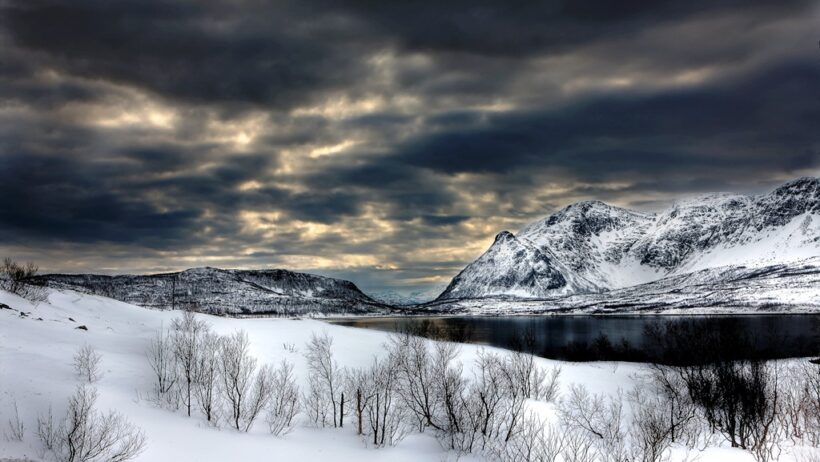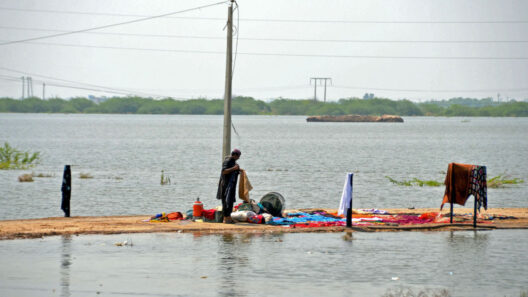The unique climate of Norway is often a point of intrigue, especially when one explores the country’s iconic fjords during the winter months and experiences the enchanting phenomenon of the midnight sun. As climate change continues to alter weather patterns globally, understanding the intricate dynamics of Norway’s climate becomes paramount not only for locals but for those enthralled by this northern wonderland.
Geographic Influences on Climate
Norway’s climate is profoundly shaped by its geography. The country stretches from the southern latitude of 58°N to the northern edge at 71°N, presenting a diverse array of climatic conditions. Coastal areas benefit from a temperate maritime climate, while the inland regions and northern expanse experience a subarctic climate. This stark contrast creates a dynamic juxtaposition between stark winter conditions in the mountains and milder, albeit wet, winters along the coastline.
But, what precisely characterizes winter in the Norwegian fjords? The fjords, with their sheer cliffs and deep waters, provide a striking backdrop to the winter narrative. Coastal areas typically lack the harsh frigid temperatures experienced inland, averaging around -1 to 5 degrees Celsius (30 to 41 degrees Fahrenheit). However, upon venturing inland or northwards, winter’s grip intensifies, bringing temperatures plummeting to -20 degrees Celsius (-4 degrees Fahrenheit) or lower.
The Enchantment of Fjord Winters
Winter transforms the fjords into a breathtaking tableau of snow-laden landscapes and frozen waters, inviting both locals and tourists to engage in activities that embrace the season’s chill. Skiing, snowboarding, and dog sledding become the order of the day, where adventurers confront thrilling challenges amidst towering snowdrifts and shimmering ice. The sheer beauty of the fjords enveloped in a blanket of white invokes a sense of calm and reverence.
Amidst this winter spectacle, the playfulness of nature offers another conundrum: for those seeking to witness the famed northern lights, timing is everything. The aurora borealis, with its ethereal dances in the polar sky, is not guaranteed through the season’s entirety. Visitors are tasked with the challenge of navigating weather forecasts and selecting optimal viewing locations while braving the biting cold. It’s a game of patience and strategy that adds an element of excitement to any journey.
The Midnight Sun Phenomenon
In stark contrast to the winter experience lies the phenomenon of the midnight sun, which captivates those who visit Norway during the summer months. This extraordinary event occurs due to Norway’s high latitude, resulting in the sun remaining visible at midnight from approximately mid-May to late July. The sun’s ceaseless presence bestows upon the land an almost ethereal glow. This natural occurrence lends itself to a plethora of nocturnal outdoor pursuits, blurring the lines between day and night.
However, this phenomenon also raises intriguing questions about our relationship with nature and the environment. How does the increasing duration of daylight affect local ecosystems? As climate change subtly shifts the patterns of seasons, understanding these effects becomes critical for conservation efforts. During summer, the floras and faunas of Norway experience prolonged periods of growth and activity, which can have cascading effects on biodiversity and wildlife behavior.
Climate Variability and the Effects of Climate Change
The climatic stability of Norway’s fjords faces unprecedented challenges due to climate change. Warmer temperatures have begun to influence snowfall patterns, which in turn affects the winter sports industry—a vital economic facet for many coastal communities. Glaciers that once formed the backbone of breathtaking landscapes are retreating, creating not only aesthetic shifts but also altering ecosystems that rely on glacial melt for freshwater.
Moreover, as the winter season grows milder, the potential for increased rainfall rather than snow may lead to unsightly scenarios of flash floods and landslides in the fjord regions. As residents of the fjord towns grapple with these repercussions, they are confronted with pressing questions: How can local communities adapt to these rapid changes? What measures can be taken to mitigate the adverse impacts of climate change on their livelihoods?
Conclusion
Navigating the complexities of Norway’s climate requires immense awareness and respect for the delicate balance of nature. Its winters, characterized by pristine fjords and the serene allure of the midnight sun, showcase the beauty and challenges posed by this unique environment. As climate change casts an ever-expanding shadow, the imperative to understand and adapt to these shifts becomes more pronounced. Only through communal awareness, education, and sustainable practices can Norway preserve the enchanting landscapes that define its cultural and natural heritage.
Engaging with Norway’s climatic landscape is not merely an exploration but a challenge to advocate for vigorous action against climate change. Is society truly ready to embrace this challenge, or will the mesmerizing fjords and their accompanying wonders remain mere footnotes in the annals of history?








